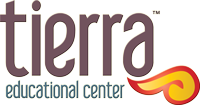You are here
Introduction:
In this lesson we will offer some general guidelines for translating the types of documents that you might come across in your work at DCS. We will first describe how to approach the translation of letters, which will be the focus of practice for this course. In our discussion of letters we will go over such topics as how to translate greetings, openings and closings, dates, level of formality, length of sentences and punctuation, and acronyms as well as go over whether or not to translate errors. We will then turn our attention to address how to approach the translation of DCS forms or parts of them and phone messages. Following these guidelines will help you to produce translations which follow basic standards and to avoid common errors.
Objectives:
After completing this lesson you will:
- Be aware of basic procedures for translating in the workplace setting and maintaining the highest standards of quality and professionalism.
- Learn specific guidelines for the translation of letters and forms.
- Be prepared to practice applying these methods in the translation of letters, forms, and phone messages.
Key Topics:
General Guidelines for Translating DCS Documents
2.1) Translating letters
a) Purpose
b) Greetings, openings, and closings
c) Dates
d) Translating formality
e) Translating sentences and punctuation
f) Translating errors
g) Acronyms and Abbreviations
2.2) Translating forms
a) Basic procedures for translating forms
b) Translating mistakes or an unclear message
2.3) Translating phone messages
a) Transcribing an oral message in the source language
b) Translating the transcription
c) Conclusion
